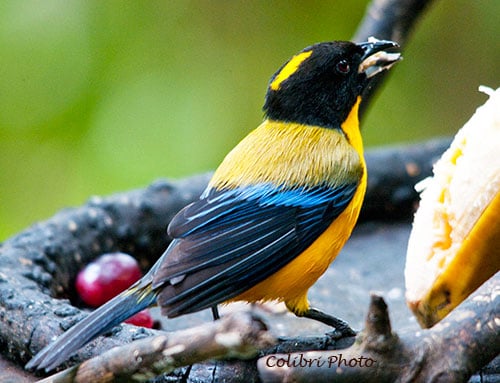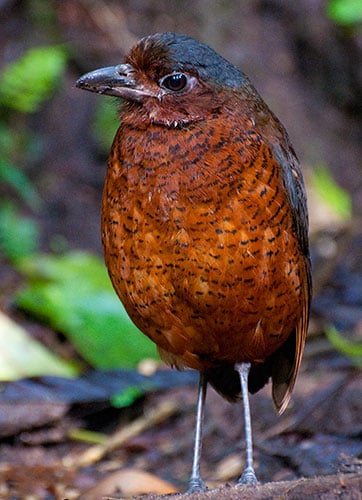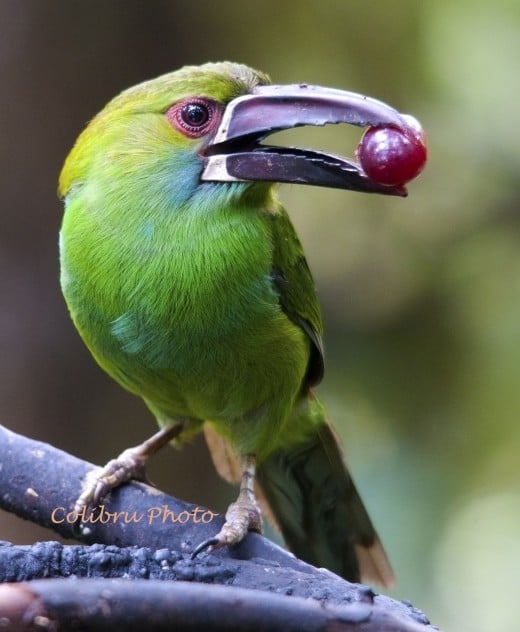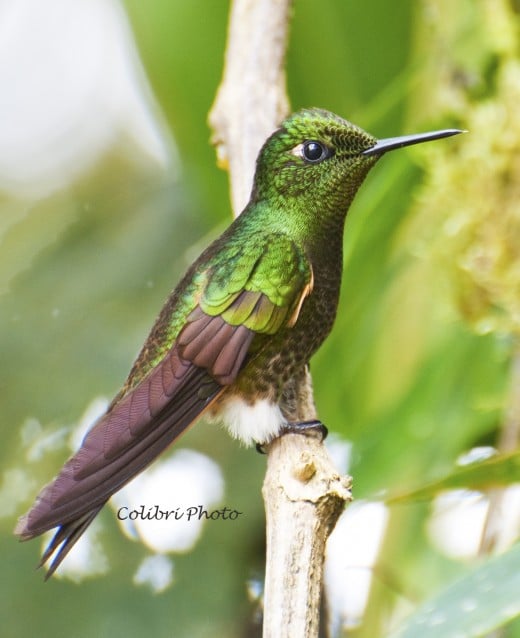Paz de las Aves – Unique Refuge in the Tropical Rainforest

Hidden in the tropical rainforest of Ecuador is a unique little farm that has become a precedent for what can be accomplished if one commits to preserving the habitats of our feathery friends. Within a very short period this humble setting has transformed from a venue for the destruction of the environment to a refuge for creatures headed for extinction.
History
Once the principal highway was completed between Quito and Mindo in 1965, the influx of people and commercialization began to take its toll on the biodiversity of the Andean western slopes. Families and businesses looking for opportunities to make a living commenced cutting trees and clearing land for farms and private enterprise. The unchecked deforestation of the tropical rainforest in the 1980s and 90s had a devastating effect on the area.
In an effort to subsist, Angel Paz and his family would cut some of the trees on their simple farm to support themselves in a small way. From childhood he had hunted some of the animals on the property to provide a little protein for the table, not knowing that several of these creatures were threatened for their own existence. Then one early morning less than a decade ago, Angel heard a ruckus in the trees that drew his attention. Brightly colored male birds were dancing and squawking in an effort to attract the attention of nearby females. Upon checking with a friend he found that these were Andean Cock-of-the-Rock, a species that are of particular interest to the many birders who visit Ecuador in search of exotic animals.

In 2004, with the encouragement of friends, Angel Paz dedicated his land to the preservation of the area and opened his farm to those who wished to observe the natural resources that it possessed. While constructing trails to the birding sites, he noticed an odd looking creature following him, gleaning the worms in his path as he turned over the soil. In earlier years he would have captured this wary subjects for dinner, but he soon learned that it was a Giant Antpitta, a seldom seen species that was vulnerable to extinction. Over the next few months he befriended the tiny follower, naming it “Maria”.
As Angel progressed in his new endeavor he discovered other uncommon bird species that he was able to encourage to appear when offered a morsel of worm. Now, the Paz farm is one of the most visited private reserves in Ecuador. People from every nation come to see not only Maria, but also Jose the Moustached Antpitta, Shakira the Ochre-breasted Antpitta, and Willie the Yellow-breasted Antpitta. There are many other birds to observe including toucans, tanagers and guans. What Angel Paz has accomplished on his small farm in the tropical rainforest has become a precedent for other landowners in Ecuador as well as other countries of South America.
Location
It is recommended to visit Paz de las Aves while staying locally either in Mindo or some of the lodges along the main highway leading from Quito. Guests are asked to arrive in the early hours before dawn in order to reach the birding sights without disturbing the morning rituals.
The Paz reserve is located on an unpaved road leading from the principal thoroughfare connecting Quito to Mindo. There is a small sign on the south side of the road at kilometer marker 66 indicating the way to the destination. A 4 km (2.5 mile) drive along this route will bring the visitor to the main entrance.
The road is passable by small sedans but would be more comfortable in a higher clearance vehicle. If staying at one of the local lodges, they normally provide transportation to the reserve at an additional fee. For those using Mindo as their base of operation, taxis are available to convey the traveler to the location. Also, many of the local establishments in town, such as Hacienda San Vicente, can make arrangements for their clients.

The reserve
The Paz de las Aves Reserve encompasses 49 ha (120 ac) of primary and secondary forest at 2000 m (6,500 ft) elevation. Tours of the property start in the early morning and visitors are required to arrive by 5:30 AM. Groups are limited in size due to the small nature of the hides near the Cock-of-the-Rock lek. Reservations are necessary to ensure a position in one the daily treks.
Recognizing that this is a cloud forest reserve, visitants should be prepared for the morning jaunt by wearing light raingear and comfortable boots. A small flashlight will aid in traversing the narrow and rugged pathways through the darkness of the dense understory. Stealth and silence are required to arrive at the first hide before the arrival of the mating birds. The appearance of the Cock-of-the-Rock to this area is almost a daily occurrence and the diligent observer should be rewarded with the spectacular antics of this beautiful bird.
After spending a reasonable amount of time at the lek, Angel and his brother Rodrigo will lead the group to some fruit feeders. Along the way they will call out for various Antpittas. The Giant Antpitta will come out to the trails to delight visitors while other species will remain more cautious and only appear at the trails edge. Flash photography is frowned upon as it disturbs the shy creatures, so the observer should be prepared for low light pictures.
At the fruit feeders the group should encounter various morning diners such as the Crimson-rumped Toucanet, Toucan Barbet, and both the Black-chinned and Blue-winged Mountain-Tanagers. The birds will come quite close to the observers providing ample opportunity to view and photograph these beautiful species. The fruit feeders were originally in another area but it had to be moved due to the dominance by Sickle-winged Guan.

Once the party has had adequate time at the fruit feeders they will be led to the hummingbird feeders to observe Long-tailed Sylph, Brown Inca, White-necked Jacobin and several other colorful species. About 10:00 AM the group will be led up to the entrance to enjoy breakfast while looking out over the canopy of the cloud forest.
Viewing of the Cock-of-the-Rock and the various Antpittas can only be accomplished under the guidance of Angel and his brother. However, those who wish to return to the fruit and hummingbird feeders are encouraged to do so.
Facilities and Surrounding Area
The facilities at Paz de las Aves are for the comfort and use of the quests who visit this small reserve. There are bathrooms and showers available and also a quaint little gift shop with t-shirts and other items for visitors. There are tables and chairs for having breakfast and passing time with fellow travelers.
There are plans to build dorms for volunteers and a lodge for overnight clients. Until these are finished boarding in the towns of Mindo or Nanegalito is necessary. Some of the resorts such as Bellavista and Tandayapa provide access to Paz de las Aves upon request. Transportation can also be secured in Mindo, with or without a guide. However, it must be understood that reservations are required prior to arrival.
Summary
It is remarkable what has been accomplished by a simple farmer to preserve the natural habitats of a once threatened area. A visit to this reserve is necessary to appreciate the inherent beauty of the region and observe fauna that remains unnoticed to so many. Paz de las Aves is a treat for the avid adventurer and naturalist.
Other Article by this Author
- Rio Silanche Bird Sanctuary - Tropical Rainforest Re...
Deforestation has become a bane for the many inhabitants of the tropical rainforests around the world. Although the exotic trees are a boon for the local farmers, their destruction in the name of... - Milpe Ecuador, an Oasis in the Rainforest
The Milpe Bird Sanctuary lies in the Los Bancos-Milpe rainforest valley in the western foothills of the Andes Mountains in Ecuador. It is one of the Mindo Cloudforest Foundation acquisitions dedicated to the preservation of the.. - Yellow House – Secret Garden in the Ecuadorian Rai...
The Mindo-Nambillo protected forest is one of the most biodiverse areas of the world. The Hacienda San Vicente (Yellow House) lies in the center of this tropical rainforest provided numerous opportunities to enjoy the tranquility and beauty of nature
Related Links
- The Birds of Ecuador
Photos and articles about the various birds of Ecuador - Discovering the Birds of Ecuador
Blog on the birding locations of Ecuador








